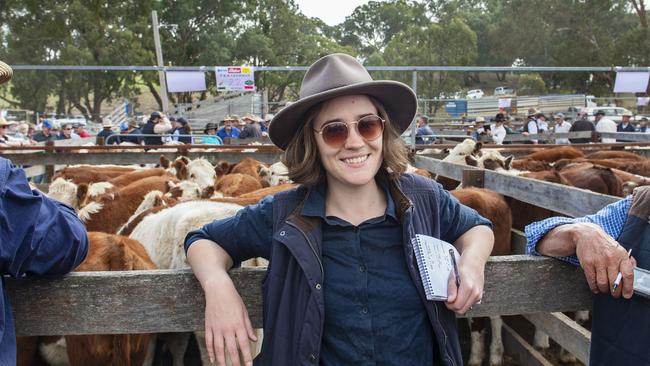Rural childcare pain: “it’s bloody hard”
When this reporter relocated to regional Victoria, long childcare waitlists highlighted the strain many regional women feel daily.

Horsham farmer and consultant Denise McLellan was an educated working mother, when she struggled to secure reliable childcare for her three young children.
With no family living nearby, minimal access to care, and a partner often working late hours on farm, Ms McLelland said it was “bloody hard” parenting.
“I had family daycare a couple of days a week, but it wasn’t enough,” Ms McLelland said.
“I used friends for hair cuts, appointments … on my resume I have a period of eight to 10 years that’s asking, what am I doing? It definitely came at a cost to me.”

The emotional, financial, and professional fatigue felt by many regional women struggling to access child care is acute and stressful.
But more financial investment in the childcare sector across the country could potentially boost labour supply nationally by an estimated 2 per cent, according to the National Foundation for Australian Women.
Regional Australia Institute chief executive Liz Ritchie said it was “not enough” to just identify and fill vacancies at childcare centres.
“Government needs to double down on its efforts and policy focus on regional Australia,” Ms Ritchie said.
A lack of childcare, according to a report published by the Mitchell Institute last year, is most heavily felt in regional Australia, with about 75 per cent of Australians who live in outer regional, remote, and very remote parts of the country living in a “childcare desert”: a region where there are less than 0.333 childcare places per child.
In Victoria, one doesn’t need to travel far into the regions to find one: Korumburra, Yea, and the Castlemaine areas are all within two hours of Melbourne, yet have 0.0 childcare places per child, according to Mitchell Institute data.
Childcare deserts affect about 45 per cent of Australians living in inner regional areas, compared to just 29 per cent of people in metro regions.
Access to child care is a key resource needed for more people to participate in the workforce across regional and remote Australia, with the Regional Australia Institute’s Regionalisation Ambition 2032 plan reporting workforce participation in Regional Australia was 64 per cent in 2021, compared to 68 per cent in major cities.
And the gender divide further illustrates the need for better access to childcare for women, with regional workforce participation rates for women just 61 per cent compared to 68 per cent of males.

Ms Ritchie – a working mother herself – said the growth of the care and support economy was critical to social and economic transitions in regional Australia, particularly in the face of ongoing rural migration, with recent RAI data reporting more than 166,000 people moved to regional Australia between 2016-2021.
“With the movement we’re seeing, unless every mover is a childcare worker, what you’re seeing is more acute pressure in the regions, and each person that moves creates more service needed,” Ms Ritchie said.
A better appreciation of the care sector would also go a long way to assisting investment in the industry, Ms Ritchie said, along with acknowledging the mental load on regional women juggling many balls.
“Quite often it’s women volunteering at the canteen, at local clubs … they’re filing roles that are not paid,” Ms Ritchie said.
“And they’re pulled in a million directions, more so than you’d find in metropolitan roles, because many of those roles are paid.”
It’s not all doom and gloom: the RAI’s Regionalisation Ambition progress report published this year showed the number of childcare services in regional Australia lifted more than 5 per cent between 2021 and 2022.
“It was a bold move (for the Federal government) to make childcare more affordable and to stump up the funds there. We totally welcome that,” Ms Ritchie said.
“But to make it more affordable doesn’t solve the problem of access.”
The lack of childcare in the regions is something peak industry body GrainGrowers has been working to remedy.
GrainGrowers made a submission to the Productivity Commission Inquiry into Early Childhood Education and Care, identifying workforce shortages as one of the top issues facings the grains industry, with the scarcity of childcare options for farming families presenting a “significant barrier” for parents re-entering the workforce.
GrainGrowers chief executive Shona Gawel said she had heard of experiences across the regions, such as burnt-out educators, staggering wait lists, or parents unable to return to work because there was no childcare available.
She said the efforts of GrainGrowers’ national policy group sought to identify key opportunity areas to bring “practical solutions”.
“These experiences are clearly reflected in our annual policy survey, with nearly 40 per cent of our members identifying workforce issues as a top area of concern,” Ms Gawel said.
A working parent herself, Ms Gawel said she took a career break for a year as her family couldn’t make the childcare provision available to them.
“Multiply that in our rural and remote communities and it’s exacerbated tenfold.”
Through her involvement with the GrainGrowers policy group, Ms McLelland said she had noticed a workforce gap of women aged 30 to 40, who were not able to participate in industry because of access to care.
“When it comes to essential workers, there are plenty of women with children who are nurses, doctors, and providing key services,” Ms McLelland said.
“It affects families, businesses, communities. And I look at my situation, and my career suffered.
“Mothers are screwed.”
THE JUGGLING ACT: MADELEINE’S ACCOUNT
When my family relocated back to regional Victoria, we focused on all the ways our lives were about to improve: the proximity to family, wide open spaces for my son, and the community atmosphere of a small town.
But when I went to enrol my child in childcare I hit a roadblock. There were simply no available spaces, many citing waitlists a year long.
I was a manic woman ringing centres; after one fitful burst I’d put his name down on four waitlists in towns spanning a 40km radius of our home.
And this was all months before we’d even relocated.

There are countless reports highlighting the effect of limited to non-existent childcare spaces for people across rural Australia. We don’t live in a world where every woman can afford to quit her job, or work reduced hours.
A woman who spoke to me on condition of anonymity (due to concern for her work status) said returning to work after having a baby was essential for her, yet she could not work without someone helping to look after her daughter.
While she has family help from her in-laws, her own parents are four hours away and unable to assist.
“It’d be nice to be able to plan my return to work knowing that we have childcare locked in,” she said, adding she has concerns about progressing her career without stable childcare.
“It’s added stress to an already unknown situation.”
When it comes to agriculture, female participation in the workforce is not a trivial topic.
Statistics show almost 50 per cent of farmers are women.
If even a portion of those women are being forced to choose between work or staying at home, that’s a significant portion of the rural population not participating in the economy.
When I am with my son, I want to be with him, and focused on him alone.
When I am working, I want to be dedicated to the job.
But when you can’t access the help you need, you do two full-time jobs at once.
Whenever I take a call from a colleague while silently shush my squawking child, I feel unprofessional.
Each time I turn the television on and let some colourful children’s program occupy my son’s attention I feel like the world’s most awful mother.
I acknowledge my relative comfort working from home without having to travel into an office. I can sneak in phone calls juggling toddler on my hip, making edits on my laptop in a play pen or late at night.
I’ve also found people post-pandemic are understanding and don’t mind the odd giggle or shriek from a toddler.
One time, I heard the bleating sound of a loud instrument down the end of the phone as I attempted to conduct an interview.
“Apologies for that,” the voice said. “That’s my son practising the trumpet.”
This isn’t a call to place every child in regional Australia in full-time care. Nor is this coercing mothers to drop their child off with whoever will take them so they can return to work.
This is a story about choice, and granting rural women opportunities to make the best decisions they can, for their families, their finances, their careers, and their communities.
And with a demonstrated growth in rural populations in recent years, childcare is yet another rural resource crying out for better planning, policy, and government investment.





